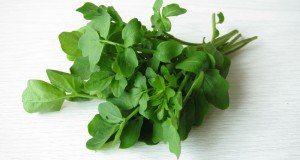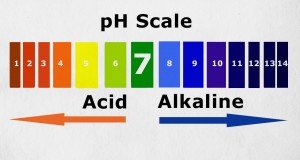Tocotrienols: A new way to combat cancer
(NaturalHealth365) With the recent discovery by scientists that two natural substances can target and remove aging and “senile” cells, the battle against cancer is moving in promising new directions. Research has confirmed that the combination of quercetin and a form of vitamin E – called tocotrienols – works to rid the body of the aging cells that are a major cause of chronic inflammation and disease – while simultaneously promoting the health and growth of normal cells.
Triggering cellular senescence could be a cancer breakthrough
When “old” cells stop dividing, they stop creating new cells. These obsolete cells also lose the ability to die off, a condition called cellular senescence. Senescent cells then accumulate in the body, emitting pro-inflammatory chemicals – promoting aging and increasing cancer risk.
However, there is a scenario in which cellular senescence is desirable. Triggering senescence in malignant cancer cells not only stops their uncontrolled replication, but causes them to die. By clearing away senile cells and inducing aging in malignant cells, quercetin and tocotrienols could stop tumors from growing.
In other words: manipulating cellular senescence so that it affects tumors could be the key to fighting cancer.
What are tocotrienols?
Tocotrienols are a form of natural vitamin E found in wheat germ, barley and some grains and nuts. They are anti-inflammatory and cholesterol-lowering, and even offer protection against radiation.
Most research has focused on the better-known tocopherol form of vitamin E, so researchers are just beginning to discover the potential of tocotrienols, and to credit them with anti-aging effects. Recent research has focused on gamma-tocotrienol, one of the four forms of tocotrienols.
Studies have shown gamma-tocotrienol selectively targets cancer cells, triggering cellular senescence and promoting apoptosis – a type of programmed cell suicide. At the same time, tocotrienol greatly benefits normal, healthy cells, slowing aging, promoting normal cell division and preventing them from developing senescence.
Tocotrienol’s beneficial effects seem to be strengthened when it’s combined with quercetin, a flavonoid and powerful antioxidant that helps plants fight off infection. Researchers classify both tocotrienol and quercetin as sinolytics – meaning they can slow aging and prolong life.
Research confirms tocotrienol’s anti-cancer effects
A cell study published in Biofactors demonstrated that tocotrienol can stop tumors from spreading. This finding was reinforced by an animal study, in which tocotrienol inhibited tumor growth in mice that had been injected with human liver cancer cells. Other research confirmed tocotrienol’s protective effects on normal cells, with researchers reporting that the vitamin reversed cell cycle arrest and reduced DNA damage.
In a study published this year in Current Drug Targets, a combination of tocotrienols and quercetin induced senescence and promoted apoptosis in many different types of cancer cells, while delaying senescence in healthy cells and rejuvenating formerly healthy senescent cells. Calling quercetin and tocotrienols “promising natural compounds” researchers noted that they appear to satisfy all requirements for developing senescence-targeted health-prompting nutraceuticals.
How can I take tocotrienol and quercetin for protection against cancer?
Although abundant animal and cell studies indicate the strong anti-cancer effects of these two compounds, researchers have called for more clinical studies to be performed in order to discover the most effective ways of using them.
The current recommended dose of quercetin is 500 to 800 mg a day for three months to rid the body of senile cells, followed by a maintenance program of 150 mg a day.
Benefits have been seen with dosages of tocotrienol ranging from 40 to 400 mg a day. For chemopreventive effects, experts recommend 150 mg of tocotrienol a day for 90 days, followed by a maintenance dose of 100 mg a day.
Although quercetin and tocotrienol are considered generally safe, they can interact with some medications. As always, consult your doctor before supplementing with them.
Bottom line: This innovative combination of compounds could well prove to be the breakthrough in cancer prevention and treatment that scientists have been searching for, combating this life-threatening disease effectively, safely and naturally.
References:
https://www.lifeextension.com/Magazine/2016/10/Natural-Compounds-that-Remove-Aging-Cells/Page-01
https://www.ncbi.nlm.nih.gov/pubmed/26343116
https://www.tocotrienolresearch.org/category/scientific_research/antioxidation_and_anti_ageing/page/4
https://www.ncbi.nlm.nih.gov/pubmed/26948691
https://www.ncbi.nlm.nih.gov/pubmed/24722367











